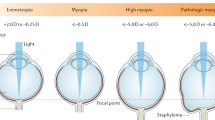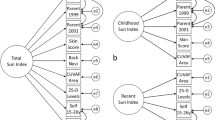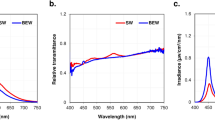Abstract
Quinn et al. reply. In not being able to find the strong association reported by us1 of childhood myopia with night-time ambient lighting before age 2 years, Zadnik et al. and Gwiazda et al. ascribe our results to a tendency of myopic parents to illuminate their children's rooms at night. Family studies of myopia typically have difficulty separating environmental from genetic factors, however, as sib–sib correlations for myopia decrease with increasing age difference2 and within-family refractive similarities decrease with adjustment for the ‘classic’ environmental factors of education and close work3. Thus, shared inter-generational behaviour (such as use of night lighting) cannot be excluded a priori as contributing to any familial association for myopia.
This is a preview of subscription content, access via your institution
Access options
Subscribe to this journal
Receive 51 print issues and online access
$199.00 per year
only $3.90 per issue
Buy this article
- Purchase on SpringerLink
- Instant access to full article PDF
Prices may be subject to local taxes which are calculated during checkout
Similar content being viewed by others
References
Quinn, G. E., Shin, C. H., Maguire, M. G. & Stone, R. A. Nature 399, 113–114 ( 1999).
The Framingham Offspring Eye Study Group Arch. Ophthalmol. 114, 326–332 ( 1996).
Bear, J. C. in Refractive Anomalies: Research and Clinical Applications (eds Grosvenor, T. & Flom, M. C.) 57–80 (Butterworth-Heinemann, Boston, 1991).
Walline, J. J., Zadnik, K. & Mutti, D. O. Optom. Vision Sci. 73, 376– 381 (1996).
Stone, R. A., Lin, T., Desai, D. & Capehart, C. Vision Res. 35, 1195–202 (1995).
Author information
Authors and Affiliations
Corresponding author
Rights and permissions
About this article
Cite this article
Stone, R., Maguire, M. & Quinn, G. reply: Myopia and ambient night-time lighting. Nature 404, 144 (2000). https://doi.org/10.1038/35004665
Issue date:
DOI: https://doi.org/10.1038/35004665



